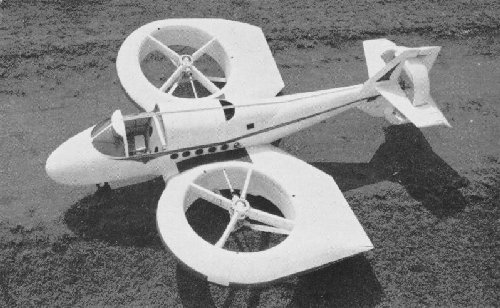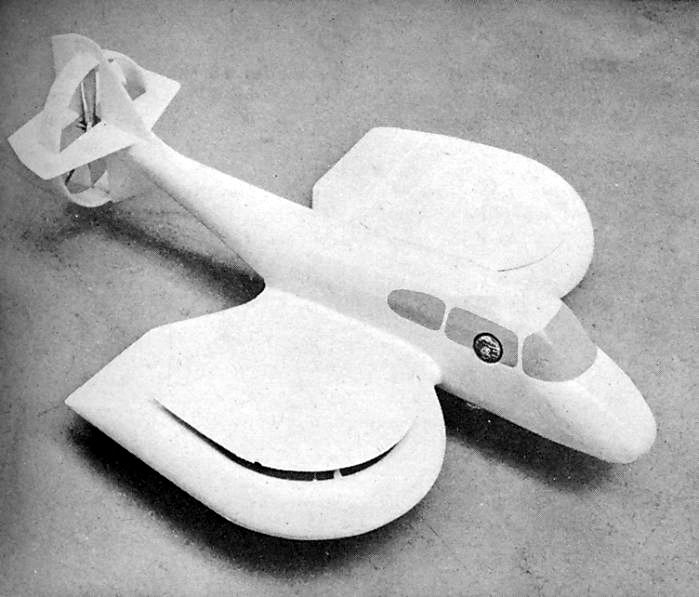

In February 1959, two former Piasecki engineers formed the Vanguard Air and Marine Corporation to design and build an executive VTOL aircraft. Their first design, the Model 2C Omniplane used a 25 ft long Ercoupe light plane fuselage and weighed 2,600 lb. The round wings each housed a 6 ft diameter three-bladed propeller that was mechanically driven for vertical flight by a 265 hp Lycoming O-540-A1A six cylinder piston engine. During forward flight, covers above the rotors and louvers below sealed the wing for aerodynamic lift. Forward thrust was produced by a 5 ft diameter shrouded propeller in the tail. Elevator and rudder surfaces immediately behind the rear fan controlled pitch and yaw, while differential propeller blade pitch affected roll in hover. Ground tests, starting in August 1959 and including tethered hover trials, were followed by NASA full-scale wind tunnel testing. Modifications to the Omniplane in 1961, including an improved control system, upgrading to a 860 hp Lycoming YT53-L-1 turboshaft engine, and 5 ft nose extension to house a third lifting propeller, led to the redesignation 2D. The nose propeller improved control in pitch as well as in yaw, through the use of movable exit vanes. The 2D completed tethered hover tests, but was damaged by a mechanical failure and discontinued in early 1962.




Comments
Post a Comment